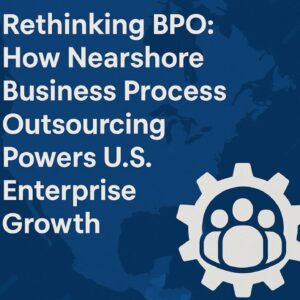The pursuit of adaptability and efficiency has become paramount for companies striving to maintain a competitive edge nowadays. Within this dynamic milieu, small and medium enterprises (SMEs) often encounter unique challenges in balancing their operational needs with limited resources. It is in this context that the concept of Staff Leasing emerges as a compelling solution, offering a strategic avenue to effectively tackle these multifaceted concerns.
This blog aims to explore its nuances and uncover the array of advantages it brings to the table. We will navigate the intricacies of this practice and delve into facts that underscore its potential to revolutionize the way businesses, especially SMEs, navigate the challenges of the modern business landscape. Whether you’re a seasoned entrepreneur or a business enthusiast, this blog pretends to equip you with a comprehensive understanding of Staff Leasing Trends and its transformative potential, empowering you to make informed decisions that can reshape the trajectory of your company’s success.
Introduction to Staff Leasing
Organizations are constantly seeking innovative staff leasing best practices to enhance their operational efficiency, flexibility, and overall performance. This practice offers a unique approach to workforce management, allowing companies to tap into a global staff leasing practices, and a diverse pool of skilled professionals while navigating the complexities of today’s business environment.
At its core, Staff Leasing involves a distinctive arrangement where businesses hire employees from third-party providers, often referred to as Staff Leasing Companies or Professional Employer Organizations (PEOs). This departure from the traditional model of direct hiring brings about a range of benefits and opportunities for both small and large enterprises.
From SMEs seeking to overcome resource constraints to larger corporations aiming to optimize their human resource management, implementing Staff Leasing offers a strategic avenue for organizations to harness talent, enhance operational agility, and drive sustainable growth.
Historical Background and Relevance in Today’s Market
The historical journey of Staff leasing highlights its remarkable adaptability and enduring value in the global business landscape. The evolution of this practice can be traced through significant milestones and shifts in focus.
According to a blog of Gateway Procurement “Outsourcing emerged in the 1950s, but it wasn’t until the 1980s that it began to be perceived as an attractive business strategy. The growth of outsourcing in the 1980s was largely driven by the focus on core competency strategy that was developed in the 1970s”.
This business model has a much deeper historical origin than previously conceived. While the initial stages of outsourcing were shaped by antiquated mandates, its evolution has been progressively positive.
It is not a surprise that Philippines is the origin of outsourcing, a country that has long been identified with and a pioneer in this concept. It wasn’t until 1990 that outsourcing experienced its peak and significance, as with the establishment of the first Contact Center in the country, the “Accenture Global Resource Center,” founded by Frank Holz. It provided basic services such as email responses and service management. Nevertheless, the concept of staff leasing, which originally took root in the Philippines, has since expanded to encompass other nations, notably including India and Mexico, driven by the forces of globalization and technological progress.
The swift digital evolution across organizations of varied scales has sparked an upsurge in the global demand for outsourcing services. The increasing embrace of cloud services has transformed outsourcing into a straightforward yet impactful cost-cutting strategy. While sizable enterprises will persist in outsourcing substantial undertakings to prominent service providers, there is also an anticipated uptick in the demand for outsourcing smaller initiatives in the foreseeable future. This, in effect, offers a profitable avenue for nimble and specialized smaller service providers.
In addition, according to a report from Global Outsourcing Services Market “The global outsourcing services market was valued at US$620.381 billion in 2020 and is expected to grow at a CAGR of 5.54% over the forecast period to reach a total market size of US$904.948 billion in 2027.”
Why Consider Staff Leasing? Exploring its benefits.
Benefits of Staff leasing develops a sense of company ownership, immersing themselves in its culture, work principles, values, and ethics. They also forge connections with fellow staff members, fostering camaraderie via team-building exercises and various social engagements. The real allure of advantages of Staff Leasing lies in several points:
Financial Efficiency; Staff Leasing Costs and Beyond: Staff Leasing Agencies help substantial savings on payroll, also can sidestep substantial expenditures on infrastructure, technology, and employee development by enlisting the services of a staff agency.
Flexibility: The ability to quickly scale operations up or down based on market demand is invaluable, especially in industries with fluctuating workloads.
Access to Expertise: This is particularly crucial for SMEs. High-level experts with hefty salary expectations can be leased, granting SMEs the expertise without long-term financial commitment.
Streamline HR responsibilities: Through the use of leased employees, you will save time in recruitment process and HR activities, including candidate outreach, application review, resume screening, interview coordination, payroll management and all the back end related with HR like law compliance, and legal and administrative work.
Tapping into global talent: Another significant advantage of staff leasing is the opportunity to tap into a global workforce. Businesses can harness top talent from developing countries where salary expectations are lower. This allows companies to access skilled professionals while significantly reducing labor costs. The concept of staff leasing not only promotes financial efficiency but also enables companies to benefit from a diverse pool of talent worldwide, enhancing their competitive edge in the global market. This strategy is also known as offshore staffing or nearshore staffing.
Staff Leasing vs. Traditional staff hiring.
Regardless of whether your company is a fledgling startup or a well-established corporation, forming a united team is essential for maintaining a competitive edge. In the pursuit of enhancing their workforce efficiency, organizations frequently encounter the choice between embracing staff leasing or traditional staff hiring strategies.
As mentioned above, Staff leasing entails a strategic pact in which a company entrusts its workforce to a third-party provider. In this model, the staff leasing company becomes the employer of record while the client organization maintains authority over the day-to-day responsibilities and job allocations of its staff.
This framework enables the client organization to channel its energies toward core business activities and strategic ventures, as all labor-intensive administrative functions are delegated to a specialized service provider.
In contrast to the staff leasing method, conventional hiring involves the direct employment of individuals to fulfill distinct positions within your organization. This method is the traditional route for staffing, where companies autonomously oversee the recruitment, selection, induction, and supervision of their workforce. The entire hiring process rests solely on the organization’s shoulders, as there is no involvement of an external intermediary. Once the selection is finalized, the chosen candidates assume the role of in-house employees. The employer bears the responsibility of furnishing requisite employment agreements, overseeing compensation and perks, and adhering to labor statutes and mandates.
How to Implement Staff Leasing in Your Company
Implementing staff leasing for businesses involves careful steps. First, assess roles you would like to use staff leasing and set goals, like cost savings or expertise. Define responsibilities, create a clear agreement, and transition employees smoothly. Also, effective communication forms the foundation; transparently transition existing employees, emphasizing benefits and role changes. Prioritize comprehensive training and onboarding to align with your company’s ethos. Moreover, evaluate success with metrics and adapt as needed based on feedback. This fosters positive staff leasing solutions, excellent experience and therefore, continual improvement.
As businesses embrace staff leasing trends, crucial considerations come to the forefront. Firstable, understand your workforce needs and goals, identifying the best roles to start with. In addition, choosing a reputable partner with a track record aligned with your industry would make an enormous difference; look at their revies and testimonials.
Ready to empower your business with Remote Staff Leasing? Discover how a Staff Leasing agencies can transform your business and impulse your growth by offering unparalleled flexibility, cost savings, and access to top talent. Don’t miss out on the opportunity to lead in your industry. Contact us today to consult with our team of experts, and let’s take the first step toward a more efficient and effective workforce!



